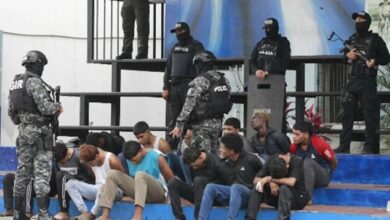The forgotten ones: Hondurans in Mexico
The International Organization for Migration states that Honduran immigration accounts for 0.3% of its total population

Since November 26th, 2017 Honduras’ socio-political instability has once again detonated violence and repression. While the opposition, led by Salvador Nasralla and the President Juan Orlando Hernández, faced an electoral battle full of uncertainties, protests spread rapidly. Aside from the political consequences of the election and the issue of legitimacy within the formation of a new government, it is important to shed lights on the abandoned topic of migration across Central America and Mexico.
During the 80’s, the United Nations and the Organization of American States agreed that the movement of people in the region was primarily caused by violence and economic inequality. Since then, the area has been experiencing relevant flows of people who face the perils of organized crime activities and extreme poverty.
The International Organization for Migration states that Honduran immigration accounts for 0.3% of its total population. Moreover, almost 50% are women and 31% are children under 15. The trans-national movement of both women and children has reconfigured social relations among Honduran families at home and abroad. Although the Economic Commission for Latin America reported that during the 90’s, Central American immigration moved between countries, many others travel to Mexico as they aim to reach the United States. Thus, Mexico became an essential route for migrants.
Despite the common assumption that Mexico plays only a temporary role along the migration route, the rise of violence in that country and the spread of anti-migration policy in the US showed the opposite. According to the Honduran Migration Office, in 2016, Mexico deported more people than the US did. Despite the numbers, such a comparison illustrates two relevant issues. The first is that Mexico has become a permanent host country for many Hondurans and the second shows that the Mexican government’s policies towards migration are not very different from the ones offered by President Trump.
The term refugee is barely used in Latin America. However, it will be useful to look at such term and rethink how Mexico has addressed what Adam Isacson, Senior Associate of the Washington Office on Latin America, considered as a humanitarian crisis. Albeit UN recommendations regarding the humanitarian issue, the Mexican government’s attitude has not changed. Therefore, Hondurans have found ways to support each other and have maintained a link with their families back home.
As they get together, large groups of co-nationals have been forming around central cities. These social formations aim to fulfill basic human necessities and protect children and women from gender-based violence and human trafficking. As violence increases in both Mexico and Central America and as exclusionary policies prevail, the formation of small Honduran Diasporas in Mexico highlights the complexity of trans-national movements in Central and Latin America. Even though, the Hondurans have been forgotten by the Mexican mainstream politics, they are still there. Not so long ago, after two earthquakes hit the south of Mexico, many Hondurans helped Mexicans affected by the disaster. Indeed, Hondurans acted fast and were well organized, showing that Honduran social groups are well established despite the challenges of moving across Mexico.
Latin American Post | Alberto Ugarte
Copy edited by Susana Cicchetto





